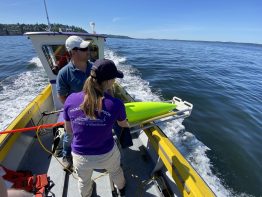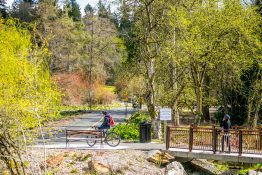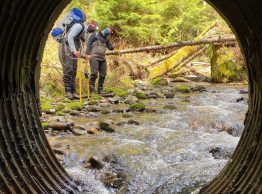The New York Climate Exchange, a first-of-its-kind organization working to implement innovative climate solutions in New York City and across the globe, on Nov. 9 announced Stephen Hammer as its founding chief executive officer.
Read more at UW News »UW students get hands-on experience with Seagliders
In spring of 2023, University of Washington undergraduates loaded a curious-looking, brightly-colored machine onto a boat and headed out into Puget Sound. The machine, an autonomous underwater vehicle known as a Seaglider, looked like a cross between a torpedo and a rocket ship, and would be tasked with collecting a variety of important data about our oceans. What’s more, this particular launch would represent the first successful deployment of a Seaglider by UW students.
Read more »Watch the 2023 Doug Walker Lecture: Future-forward solutions for nature, health and the urban environment
Weaving nature more deliberately into the fabric of our urban communities can improve our quality of life. From urban parks to sustainable infrastructure, integrating nature into our cities makes us healthier, happier, smarter and safer. On Oct. 25, the College of the Environment’s 2023 Doug Walker Lecture at Town Hall Seattle explored these topics and more with UW alum Heather Tallis, an environmental scientist and professor.
Read more »UW experts offer hot takes on El Niño, weather and ocean temperatures
Ocean temperatures and their connections to weather trends have been making news. Five UW College of the Environment experts offer their perspectives on the current El Niño — a climate pattern in the tropical Pacific Ocean that affects weather worldwide. UW researchers comment on the current El Niño, its effect on weather in the Pacific Northwest, as well as on regional and global ocean temperature trends.
Read more at UW News »DNA shows where Washington culvert replacements helped spawning salmon
To help struggling salmon populations, the state of Washington is legally required to replace hundreds of culverts that divert streams under roadways. The state transportation department is replacing old, rusting metal pipes with broad, concrete promenades that provide more gradual gradients and gentler flows for salmon swimming upstream to access more spawning grounds. The full scope of the effort will last 17 years and cost $3.8 billion.
Read more at UW News »





